Method for Evaluating Stallion Sperm
July 15, 2019
Posted by
Dr. Ed Squires in
Stallion Management
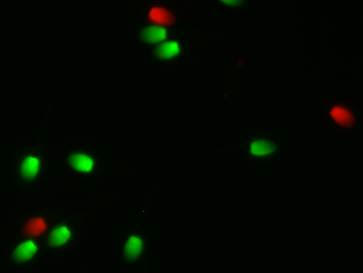 Those of us who work with stallions are routinely asked to determine a stallion’s fertility prior to breeding mares or to investigate the cause of low fertility. Often this requires sending the stallion to a specialized veterinary clinic or a veterinary school. Advances have been made in stallion fertility evaluations through the use of computerized sperm motion analyzers (CASA) and flow cytometry.
Those of us who work with stallions are routinely asked to determine a stallion’s fertility prior to breeding mares or to investigate the cause of low fertility. Often this requires sending the stallion to a specialized veterinary clinic or a veterinary school. Advances have been made in stallion fertility evaluations through the use of computerized sperm motion analyzers (CASA) and flow cytometry.
Fertility of Frozen-Thawed Semen Stored Cooled After Thawing
April 09, 2019
Posted by
Dr. Ed Squires in
Frozen Semen
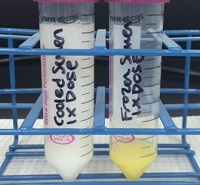 There are numerous advantages of frozen semen. If maintained properly in
liquid nitrogen, frozen semen will last indefinitely. This allows frozen
semen to be shipped to the mare and the mare bred at the most opportune
time, close to the time of ovulation. One other use of frozen semen that
seems to be gaining in favor is for farms to ship frozen semen to mares
when there is a shortage of cooled semen. Alternatively, the breeding farm
uses frozen semen to breed mares housed at the farm and ships out the
cooled semen. Thus, frozen semen becomes the "backup plan" for breeding
mares. You can find additional information to consider when deciding if
frozen semen is a fit in your breeding program by reading these articles on
the SBS Website: ‘Why Freeze Stallion Semen?’, ‘The Pros and Cons of Equine
Frozen Semen’ and ‘The Hidden Value of Frozen Semen’.
There are numerous advantages of frozen semen. If maintained properly in
liquid nitrogen, frozen semen will last indefinitely. This allows frozen
semen to be shipped to the mare and the mare bred at the most opportune
time, close to the time of ovulation. One other use of frozen semen that
seems to be gaining in favor is for farms to ship frozen semen to mares
when there is a shortage of cooled semen. Alternatively, the breeding farm
uses frozen semen to breed mares housed at the farm and ships out the
cooled semen. Thus, frozen semen becomes the "backup plan" for breeding
mares. You can find additional information to consider when deciding if
frozen semen is a fit in your breeding program by reading these articles on
the SBS Website: ‘Why Freeze Stallion Semen?’, ‘The Pros and Cons of Equine
Frozen Semen’ and ‘The Hidden Value of Frozen Semen’.
Endocrine Diagnosis of Infertility in Stallions
April 05, 2018
Posted by
Dr. Ed Squires in
Stallion Management
 Diagnosis of infertility in stallions usually starts with a complete reproductive history and then collection of semen to evaluate seminal parameters, testis size and the potential presence of bacteria in the semen. A more detailed evaluation might also include drawing blood for hormonal analysis.
Diagnosis of infertility in stallions usually starts with a complete reproductive history and then collection of semen to evaluate seminal parameters, testis size and the potential presence of bacteria in the semen. A more detailed evaluation might also include drawing blood for hormonal analysis.
Measuring Hormone Levels in Mares
March 02, 2018
Posted by
Dr. Ed Squires in
Mare Management
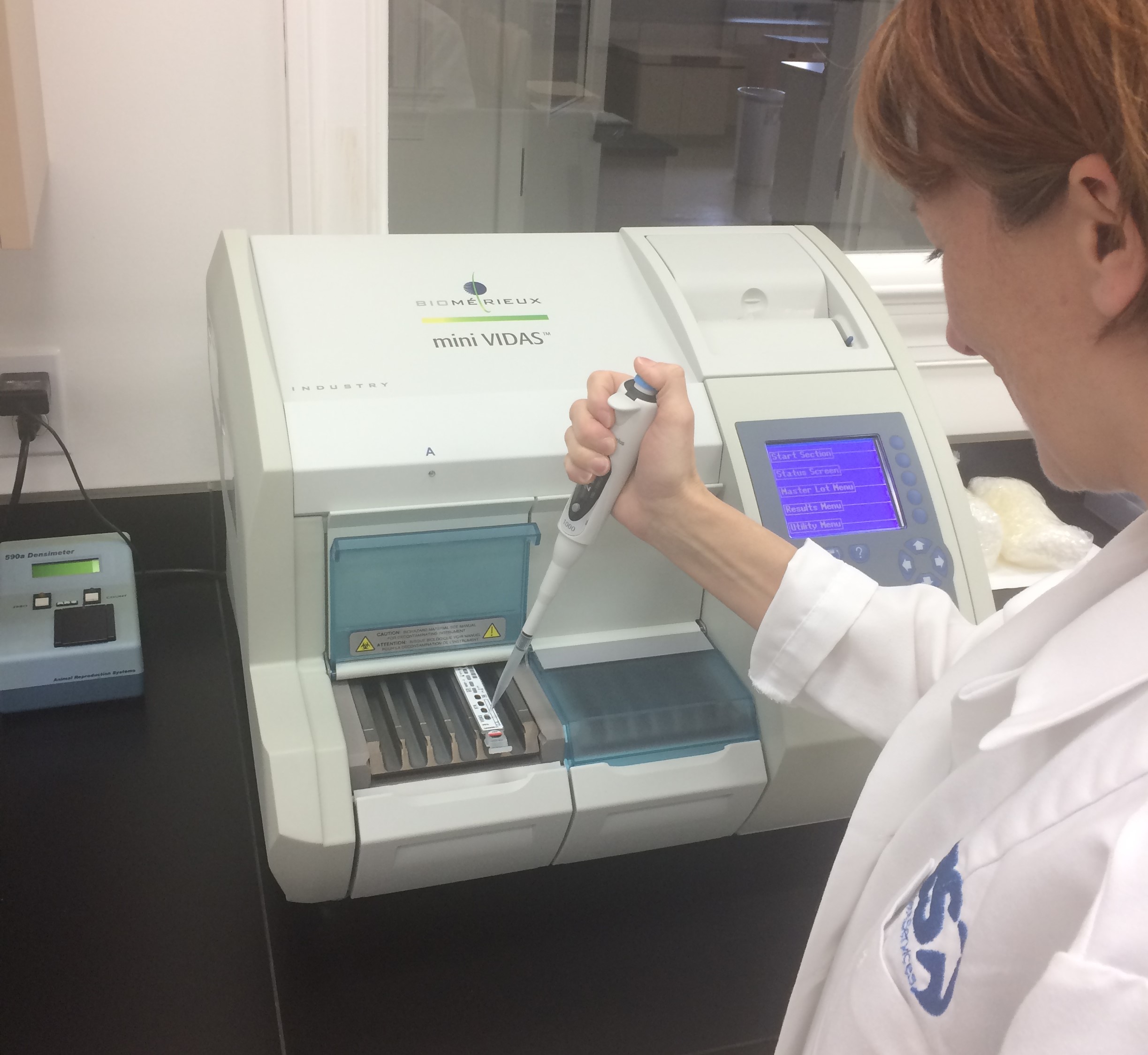 Endocrine diagnostics certainly have a place in the routine management of mares and stallions as well as in diagnosis of problems and diseases. However, there are likely more applications for measuring hormones in mares than stallions. Dr. Ed Squires will discuss the hormones tested in mares in this article and will then cover the testing of stallion hormones in a subsequent article.
Endocrine diagnostics certainly have a place in the routine management of mares and stallions as well as in diagnosis of problems and diseases. However, there are likely more applications for measuring hormones in mares than stallions. Dr. Ed Squires will discuss the hormones tested in mares in this article and will then cover the testing of stallion hormones in a subsequent article.
Trends in Equine Assisted Reproduction
October 03, 2017
Posted by
Dr. Ed Squires in
Mare Management
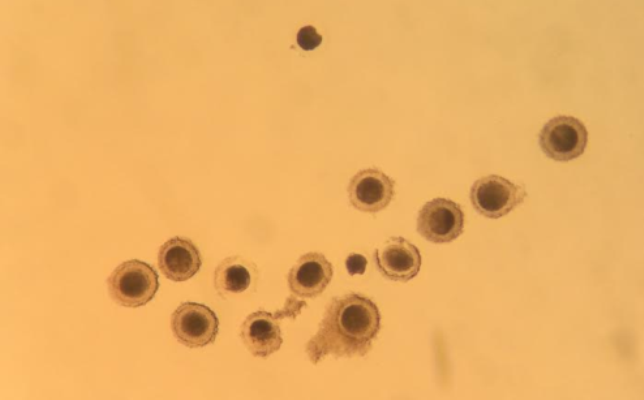 It has been almost 20 years since I started an assisted reproduction program at Colorado state University. The purpose of that program was to develop techniques to preserve equine genetics. It is beyond the scope of this article to discuss all the goals of that program but I would like to focus on production of foals from old mares and stallions via in vitro technology (aka test tube horse).
It has been almost 20 years since I started an assisted reproduction program at Colorado state University. The purpose of that program was to develop techniques to preserve equine genetics. It is beyond the scope of this article to discuss all the goals of that program but I would like to focus on production of foals from old mares and stallions via in vitro technology (aka test tube horse).
Is the Volume of the Inseminate Important for Fertility?
March 05, 2017
Posted by
Dr. Ed Squires in
Mare Management
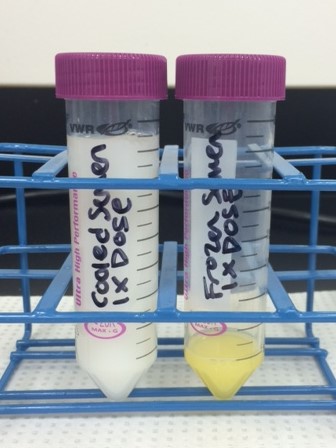 A common question asked by many breeders is whether the volume of semen deposited into the mare affects fertility. When a mare and a stallion mate naturally the entire ejaculate is deposited into the mare. This volume is usually 50 ml or more and includes several billion sperm. However, when breeding mares using artificial insemination, good fertility can be achieved with as little as 1/2 ml of semen. I have been telling breeders for years that the volume of the ejaculate is not important as long as the stallion is producing good sperm numbers. For example, a stallion can produce 8 billion sperm with 80 ml of semen at a concentration of 100 million sperm/ml or 20 ml of semen at a concentration of 400 million sperm/ml. Volume of the ejaculate and concentration are inversely related (i.e. if volume goes up then concentration goes down).
A common question asked by many breeders is whether the volume of semen deposited into the mare affects fertility. When a mare and a stallion mate naturally the entire ejaculate is deposited into the mare. This volume is usually 50 ml or more and includes several billion sperm. However, when breeding mares using artificial insemination, good fertility can be achieved with as little as 1/2 ml of semen. I have been telling breeders for years that the volume of the ejaculate is not important as long as the stallion is producing good sperm numbers. For example, a stallion can produce 8 billion sperm with 80 ml of semen at a concentration of 100 million sperm/ml or 20 ml of semen at a concentration of 400 million sperm/ml. Volume of the ejaculate and concentration are inversely related (i.e. if volume goes up then concentration goes down).
Suppression of Stallion and Mare Behavior
November 07, 2016
Posted by
Dr. Ed Squires in
Mare Management
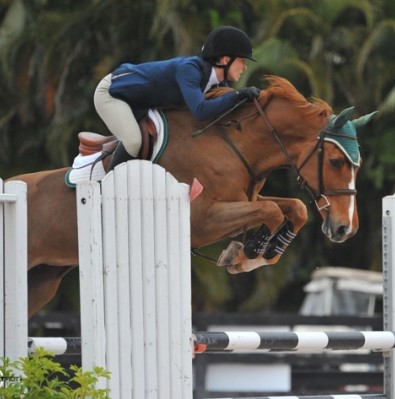 Once young colts and fillies reach the age of puberty their behavior may become an issue in the show ring or on the race track. Castrating a colt which you intend to use for breeding purposes may not be an option and mares are not typically permanently sterilized. Their sexual behavior may also cause problems with housing, trail riding, etc. In this article, Dr. Ed Squires discusses some of the common ways stallion and mare owners suppress the behavior of their horses.
Once young colts and fillies reach the age of puberty their behavior may become an issue in the show ring or on the race track. Castrating a colt which you intend to use for breeding purposes may not be an option and mares are not typically permanently sterilized. Their sexual behavior may also cause problems with housing, trail riding, etc. In this article, Dr. Ed Squires discusses some of the common ways stallion and mare owners suppress the behavior of their horses.
Recent Updates on Freezing Equine Embryos
June 02, 2016
Posted by
Dr. Ed Squires in
Embryo Transfer
The majority of equine embryos are collected from the donor mare and transferred immediately as fresh embryos or shipped cooled to a recipient station for transfer within 24 hr. You can learn more about the basics of embryo transfer (ET) in our article, Embryo Transfer and Frequently Asked Questions. Very few equine embryos are frozen despite the numerous advantages of embryo cryopreservation. We discuss the process of freezing embryos in our article, Cryopreservation of Equine Embryos. However here is a quick review of some of the advantages of freezing embryos are:
A Stallion Breeding Soundness Exam
July 30, 2015
Posted by
Dr. Ed Squires in
Stallion Management
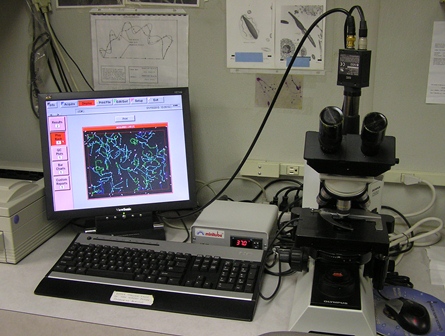 In our previous article, My Stallion is Not Settling His Mares…What Do I Do?, we discussed possible causes for the decline in a stallion’s fertility and areas of reproductive management one can investigate further to determine if the infertility can be suitably managed or resolved. One tool a stallion owner/manager can use to better understand the reproductive status of their stallion is to have a breeding soundness exam (BSE) performed. In this article, Dr. Ed Squires outlines the components of a routine BSE which include: physical exam, reproductive history, testes palpation and/or ultrasound, semen evaluation, cultures and an assessment of his sexual behavior. A BSE provides valuable information on how to manage the stud and gives an indication of the number of mares he could breed.
In our previous article, My Stallion is Not Settling His Mares…What Do I Do?, we discussed possible causes for the decline in a stallion’s fertility and areas of reproductive management one can investigate further to determine if the infertility can be suitably managed or resolved. One tool a stallion owner/manager can use to better understand the reproductive status of their stallion is to have a breeding soundness exam (BSE) performed. In this article, Dr. Ed Squires outlines the components of a routine BSE which include: physical exam, reproductive history, testes palpation and/or ultrasound, semen evaluation, cultures and an assessment of his sexual behavior. A BSE provides valuable information on how to manage the stud and gives an indication of the number of mares he could breed.
Is Deep Horn Insemination Beneficial When Breeding With Equine Frozen Semen?
May 02, 2015
Posted by
Dr. Ed Squires in
Mare Management
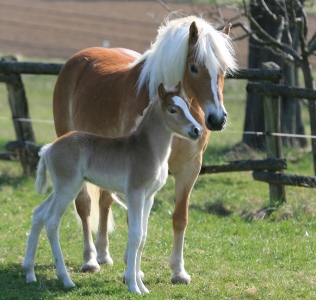 There have been many changes in how we produce foals from our broodmares in the past few decades: cooled semen, frozen semen, embryo transfer, frozen embryos, etc. One procedure that has gained popularity is deep horn insemination. This refers to placing the semen deep in the uterine horn, close to the opening of the oviduct (uterotubal junction, UTJ) on the side of ovulation instead of depositing it in the uterine body. This is typically done using a flexible pipette that can be guided to the tip of the horn with the other hand in the rectum. The end of the pipette and the tip of the uterine horn can both be felt using this method.
There have been many changes in how we produce foals from our broodmares in the past few decades: cooled semen, frozen semen, embryo transfer, frozen embryos, etc. One procedure that has gained popularity is deep horn insemination. This refers to placing the semen deep in the uterine horn, close to the opening of the oviduct (uterotubal junction, UTJ) on the side of ovulation instead of depositing it in the uterine body. This is typically done using a flexible pipette that can be guided to the tip of the horn with the other hand in the rectum. The end of the pipette and the tip of the uterine horn can both be felt using this method.
Effect of Number and Timing of Equine Frozen Semen Inseminations on Fertility
December 03, 2014
Posted by
Dr. Ed Squires in
Mare Management
Further expansion in the use of frozen semen is dependent upon developing simplified strategies for insemination. SBS has developed a timed insemination protocol where mares are only examined once per day during estrus and inseminated at 24 and 40 hr after hCG or 30 and 40 hr after GnRH. This approach allows frozen semen mares to be managed similar to those bred with cooled shipped semen. A couple of arguments against this approach with frozen semen is that it takes too much semen when mares are bred twice in one cycle and that if the mare is inseminated more than once per cycle the fertility will be lowered because of post-breeding induced endometritis. However, in a new retrospective study across 1871 mare cycles bred by SBS affiliate labs, we report additional support for the use of two inseminations per breeding cycle.
The Facts about Frozen Semen and Post Breeding Uterine Fluid
June 29, 2011
Posted by
Dr. Ed Squires in
Breeding with Frozen Semen
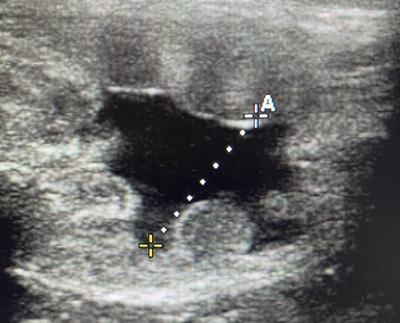 The presence of fluid in the mare’s uterus after natural mating or insemination is a normal event that occurs in response to the breeding. This is the result of an inflammatory response that is needed to rid the uterus of any excess sperm or other contaminating agents. The influx of neutrophils (white blood cells) into the mare`s uterus after breeding results in the elimination of sperm, bacteria and other cellular debris and causes the release of prostaglandins, which stimulates uterine contractions. Typically the inflammatory response peaks 12 hours after breeding and by 24 to 48 hours the mares uterus is empty of fluid. However, some mares are more susceptible to prolonged retention of fluid and it may be retained for several days after breeding.
The presence of fluid in the mare’s uterus after natural mating or insemination is a normal event that occurs in response to the breeding. This is the result of an inflammatory response that is needed to rid the uterus of any excess sperm or other contaminating agents. The influx of neutrophils (white blood cells) into the mare`s uterus after breeding results in the elimination of sperm, bacteria and other cellular debris and causes the release of prostaglandins, which stimulates uterine contractions. Typically the inflammatory response peaks 12 hours after breeding and by 24 to 48 hours the mares uterus is empty of fluid. However, some mares are more susceptible to prolonged retention of fluid and it may be retained for several days after breeding.
 Those of us who work with stallions are routinely asked to determine a stallion’s fertility prior to breeding mares or to investigate the cause of low fertility. Often this requires sending the stallion to a specialized veterinary clinic or a veterinary school. Advances have been made in stallion fertility evaluations through the use of computerized sperm motion analyzers (CASA) and flow cytometry.
Those of us who work with stallions are routinely asked to determine a stallion’s fertility prior to breeding mares or to investigate the cause of low fertility. Often this requires sending the stallion to a specialized veterinary clinic or a veterinary school. Advances have been made in stallion fertility evaluations through the use of computerized sperm motion analyzers (CASA) and flow cytometry. Diagnosis of infertility in stallions usually starts with a complete reproductive history and then collection of semen to evaluate seminal parameters, testis size and the potential presence of bacteria in the semen. A more detailed evaluation might also include drawing blood for hormonal analysis.
Diagnosis of infertility in stallions usually starts with a complete reproductive history and then collection of semen to evaluate seminal parameters, testis size and the potential presence of bacteria in the semen. A more detailed evaluation might also include drawing blood for hormonal analysis.  There are numerous advantages of frozen semen. If maintained properly in
liquid nitrogen, frozen semen will last indefinitely. This allows frozen
semen to be shipped to the mare and the mare bred at the most opportune
time, close to the time of ovulation. One other use of frozen semen that
seems to be gaining in favor is for farms to ship frozen semen to mares
when there is a shortage of cooled semen. Alternatively, the breeding farm
uses frozen semen to breed mares housed at the farm and ships out the
cooled semen. Thus, frozen semen becomes the "backup plan" for breeding
mares. You can find additional information to consider when deciding if
frozen semen is a fit in your breeding program by reading these articles on
the SBS Website: ‘
There are numerous advantages of frozen semen. If maintained properly in
liquid nitrogen, frozen semen will last indefinitely. This allows frozen
semen to be shipped to the mare and the mare bred at the most opportune
time, close to the time of ovulation. One other use of frozen semen that
seems to be gaining in favor is for farms to ship frozen semen to mares
when there is a shortage of cooled semen. Alternatively, the breeding farm
uses frozen semen to breed mares housed at the farm and ships out the
cooled semen. Thus, frozen semen becomes the "backup plan" for breeding
mares. You can find additional information to consider when deciding if
frozen semen is a fit in your breeding program by reading these articles on
the SBS Website: ‘ Endocrine diagnostics certainly have a place in the routine management of mares and stallions as well as in diagnosis of problems and diseases. However, there are likely more applications for measuring hormones in mares than stallions. Dr. Ed Squires will discuss the hormones tested in mares in this article and will then cover the testing of stallion hormones in a subsequent article.
Endocrine diagnostics certainly have a place in the routine management of mares and stallions as well as in diagnosis of problems and diseases. However, there are likely more applications for measuring hormones in mares than stallions. Dr. Ed Squires will discuss the hormones tested in mares in this article and will then cover the testing of stallion hormones in a subsequent article.  It has been almost 20 years since I started an assisted reproduction program at Colorado state University. The purpose of that program was to develop techniques to preserve equine genetics. It is beyond the scope of this article to discuss all the goals of that program but I would like to focus on production of foals from old mares and stallions via in vitro technology (aka test tube horse).
It has been almost 20 years since I started an assisted reproduction program at Colorado state University. The purpose of that program was to develop techniques to preserve equine genetics. It is beyond the scope of this article to discuss all the goals of that program but I would like to focus on production of foals from old mares and stallions via in vitro technology (aka test tube horse).  A common question asked by many breeders is whether the volume of semen deposited into the mare affects fertility. When a mare and a stallion mate naturally the entire ejaculate is deposited into the mare. This volume is usually 50 ml or more and includes several billion sperm. However, when breeding mares using artificial insemination, good fertility can be achieved with as little as 1/2 ml of semen. I have been telling breeders for years that the volume of the ejaculate is not important as long as the stallion is producing good sperm numbers. For example, a stallion can produce 8 billion sperm with 80 ml of semen at a concentration of 100 million sperm/ml or 20 ml of semen at a concentration of 400 million sperm/ml. Volume of the ejaculate and concentration are inversely related (i.e. if volume goes up then concentration goes down).
A common question asked by many breeders is whether the volume of semen deposited into the mare affects fertility. When a mare and a stallion mate naturally the entire ejaculate is deposited into the mare. This volume is usually 50 ml or more and includes several billion sperm. However, when breeding mares using artificial insemination, good fertility can be achieved with as little as 1/2 ml of semen. I have been telling breeders for years that the volume of the ejaculate is not important as long as the stallion is producing good sperm numbers. For example, a stallion can produce 8 billion sperm with 80 ml of semen at a concentration of 100 million sperm/ml or 20 ml of semen at a concentration of 400 million sperm/ml. Volume of the ejaculate and concentration are inversely related (i.e. if volume goes up then concentration goes down).  Once young colts and fillies reach the age of puberty their behavior may become an issue in the show ring or on the race track. Castrating a colt which you intend to use for breeding purposes may not be an option and mares are not typically permanently sterilized. Their sexual behavior may also cause problems with housing, trail riding, etc. In this article, Dr. Ed Squires discusses some of the common ways stallion and mare owners suppress the behavior of their horses.
Once young colts and fillies reach the age of puberty their behavior may become an issue in the show ring or on the race track. Castrating a colt which you intend to use for breeding purposes may not be an option and mares are not typically permanently sterilized. Their sexual behavior may also cause problems with housing, trail riding, etc. In this article, Dr. Ed Squires discusses some of the common ways stallion and mare owners suppress the behavior of their horses. In our previous article,
In our previous article,  There have been many changes in how we produce foals from our broodmares in the past few decades: cooled semen, frozen semen, embryo transfer, frozen embryos, etc. One procedure that has gained popularity is deep horn insemination. This refers to placing the semen deep in the uterine horn, close to the opening of the oviduct (uterotubal junction, UTJ) on the side of ovulation instead of depositing it in the uterine body. This is typically done using a flexible pipette that can be guided to the tip of the horn with the other hand in the rectum. The end of the pipette and the tip of the uterine horn can both be felt using this method.
There have been many changes in how we produce foals from our broodmares in the past few decades: cooled semen, frozen semen, embryo transfer, frozen embryos, etc. One procedure that has gained popularity is deep horn insemination. This refers to placing the semen deep in the uterine horn, close to the opening of the oviduct (uterotubal junction, UTJ) on the side of ovulation instead of depositing it in the uterine body. This is typically done using a flexible pipette that can be guided to the tip of the horn with the other hand in the rectum. The end of the pipette and the tip of the uterine horn can both be felt using this method.  The presence of fluid in the mare’s uterus after natural mating or insemination is a normal event that occurs in response to the breeding. This is the result of an inflammatory response that is needed to rid the uterus of any excess sperm or other contaminating agents. The influx of neutrophils (white blood cells) into the mare`s uterus after breeding results in the elimination of sperm, bacteria and other cellular debris and causes the release of prostaglandins, which stimulates uterine contractions. Typically the inflammatory response peaks 12 hours after breeding and by 24 to 48 hours the mares uterus is empty of fluid. However, some mares are more susceptible to prolonged retention of fluid and it may be retained for several days after breeding.
The presence of fluid in the mare’s uterus after natural mating or insemination is a normal event that occurs in response to the breeding. This is the result of an inflammatory response that is needed to rid the uterus of any excess sperm or other contaminating agents. The influx of neutrophils (white blood cells) into the mare`s uterus after breeding results in the elimination of sperm, bacteria and other cellular debris and causes the release of prostaglandins, which stimulates uterine contractions. Typically the inflammatory response peaks 12 hours after breeding and by 24 to 48 hours the mares uterus is empty of fluid. However, some mares are more susceptible to prolonged retention of fluid and it may be retained for several days after breeding.
